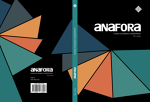Textual Allusions in the Cairo Trilogy of Naguib Mahfouz: A Stylistic Perspective
Main Article Content
Abstract
The issue of intertextuality is discussed M. Bakhtin’s work, particularly in Problems of Dostoevsky’s Poetics and The Dialogic Imagination. Bakhtin claimed that “the functional text is a hybrid entity, not a single whole; it is a composite amalgamation of a variety of formulae” (76). The theory of intertextuality attained various dimensions and wider interfaces in the works of poststructuralist theorists such as Roland Barthes and Julia Kristeva. These scholars viewed texts as networks of other texts stating that a writer’s strength lies in the ability to blend existing writings and emulate previously read and written gestures. Incorporating intertextuality theories into critical research on literary works provides a deeper comprehension of both intentional and hidden intertextual chains and allusions within the texts. This paper, utilizing critical and analytical frameworks, meticulously examines the intertextual references in Naguib Mahfouz’s Cairo Trilogy (Palace Walk, Palace of Desire, and Sugar Street), exploring their function and significance. The paper argues that the author’s use of intertextuality and allusions from multiple sources in the trilogy broadens the narrative horizons and generates new interpretations. Additionally, the paper points out that the author utilizes intertextuality as a stylistic tool, infusing the texts with references to the Quran, local folklore, and popular culture for aesthetic and thematic purposes. The integration of a diversity of intertextual references and citations from other texts enhances the portrayal of the socio-cultural dynamics underpinning the patriarchal Egyptian society, criticized in the trilogy.

